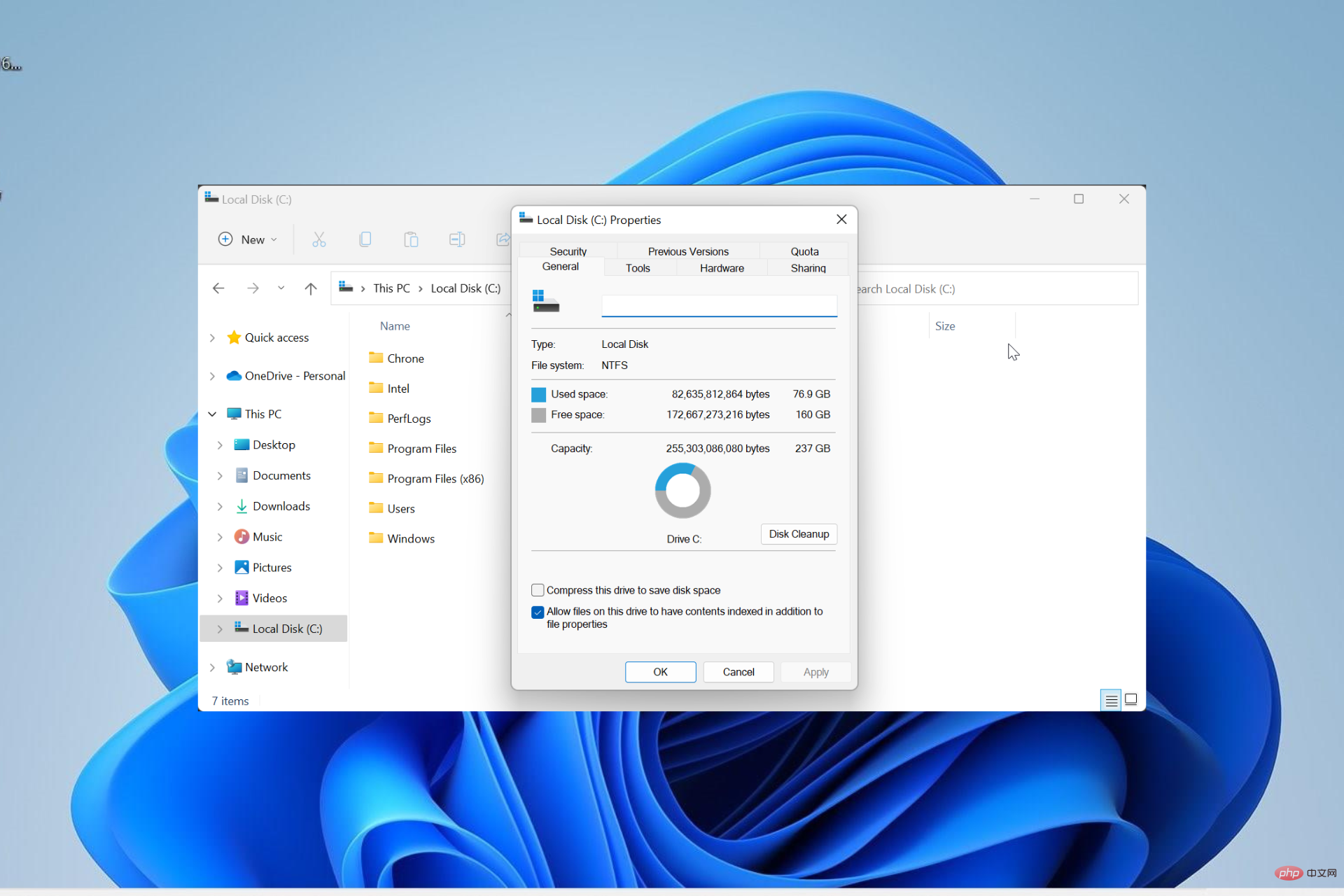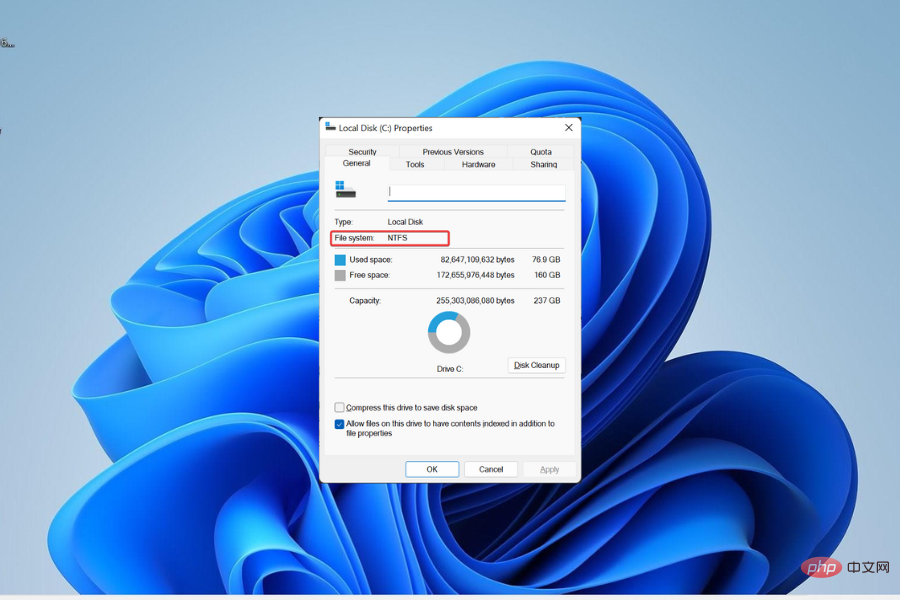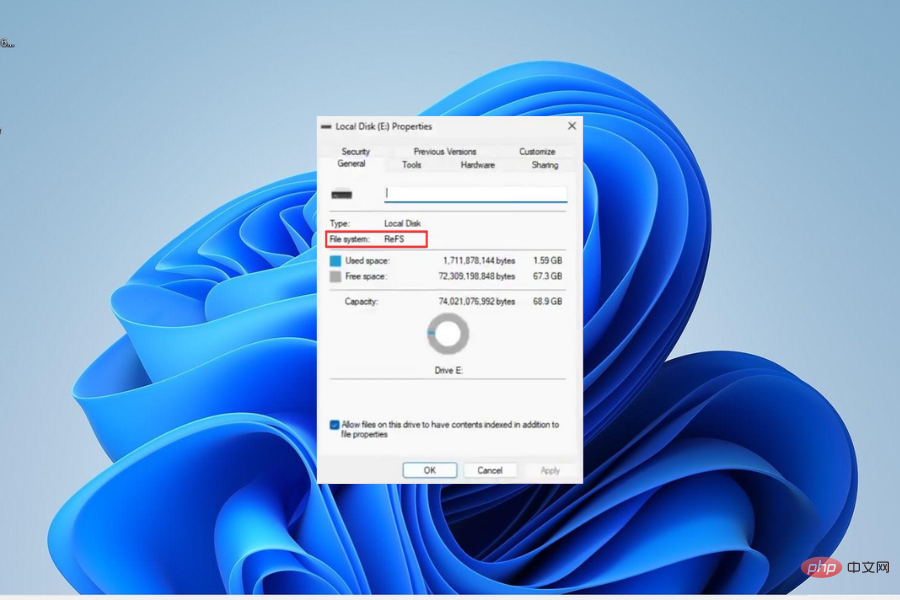Home >Common Problem >Which one is better? What are the differences, advantages and disadvantages of NTFS and ReFS in Windows 11?
Which one is better? What are the differences, advantages and disadvantages of NTFS and ReFS in Windows 11?
- WBOYWBOYWBOYWBOYWBOYWBOYWBOYWBOYWBOYWBOYWBOYWBOYWBforward
- 2023-05-10 08:06:1611805browse

NTFS has always been the default file system for Windows PCs, but Microsoft is introducing some juicy stuff with ReFS. This new file system may be coming to Windows 11, and users are eager to know what NTFS will look like compared to ReFS.
In this detailed guide, we will show you the better choice between these two file systems.
Does Windows 11 support ReFS?
Discussions about Windows 11 supporting ReFS (Resilient File System) are still tentative and ongoing. This file system is not officially available on Windows 11 PCs yet.
However, Insiders in Devs Channel and Windows Server can now access the file system. Hopefully it will be officially released sooner or later.
Does Windows 11 still use NTFS?
NTFS (New Technology File System) is still the default file system on Windows 11, just like it has been since Windows NT. There is no doubt that it remains one of the most popular file systems.
While there is talk about ReFS replacing NTFS, this may not fully happen anytime soon. Therefore, your Windows 11 PC will still be using NTFS for a while.
Windows 11 NTFS vs ReFS: Comparison
1. Reliability
As expected from any file system used on a Windows PC, both options are very reliable. However, as the latest invention, ReFS includes some new data protection features.
At the top of this list is the ability to verify and repair file corruption on your own. Your files sometimes get corrupted on NTFS due to sudden power termination.
In this case, you must run the CHKDSK command to repair the bad sectors. However, for ReFS, it does not require this command.
On the contrary, it will automatically repair files and reduce the impact of bad sectors on data. So in this aspect of Windows 11 NTFS vs ReFS, the latest file systems marginalize it.
2. Scalability
With the age of NTFS, it is obvious that it was designed at a time when large data sets were less common. However, things have changed recently and servers now handle very large amounts of data that need to be done quickly.

# To clarify this, NTFS can handle a maximum file size and volume size of approximately 256 TB. ReFS, on the other hand, supports maximum file and volume sizes of up to 35 PB (35,000 TB).
So, regarding scalability in Windows 11 NTFS vs ReFS comparison, ReFS wins.
3. Performance
This is another stronghold of ReFS. It is much faster than NTFS and has more speed-accelerating features.
One of these features is block cloning and sparse VDLs, which help improve the performance of virtualized workloads on Windows Server. Another great feature is the ability to split volumes into logical tiers to increase performance and capacity.

With this feature, whenever data needs to be written to disk quickly, it will first go to the performance tier to perform the task faster and then move to the capacity tier .
Finally, to make this data acceleration noticeable, the file system is best paired with an SSD. So in this section of our Windows 11 NTFS vs. ReFS comparison, it's not close.
4. Features
4.1. NTFS
Various excellent features make NTFS stand out. These include file system compression, which allows you to compress files at the file system level.
The other is file system encryption, which you can use to encrypt files. There is also an offloaded data transfer feature that helps speed up file copying and moving.
Here are some other NTFS features:
- Disk Quotas
- Transactions
- Page File Support
- Extended Attributes
- Supported on removable media
- Boot
4.2. ReFS
ReFS also has some unique features. A major one is block cloning, which is used to perform file copies as low-cost metadata operations.
This helps speed up file copying. There's also sparse VDL and mirror accelerated parity, all to make it faster.
Finally, some features are common to NTFS and ReFS. Some of these are features like BitLocker encryption, access control lists, reparse points, fault cluster support, and deduplication.
So in this aspect of our Windows 11 NTFS vs. ReFS comparison, the two file systems have more in common than differences.
Is ReFS better than NTFS?
While NTFS services are good and continue to do so, Windows 11 NTFS vs. ReFS comparison shows that ReFS is much better. It wins on performance, reliability and scalability, among other decisive factors.
However, you will have to wait a little longer before using it on your Windows 11 PC.
The above is the detailed content of Which one is better? What are the differences, advantages and disadvantages of NTFS and ReFS in Windows 11?. For more information, please follow other related articles on the PHP Chinese website!

